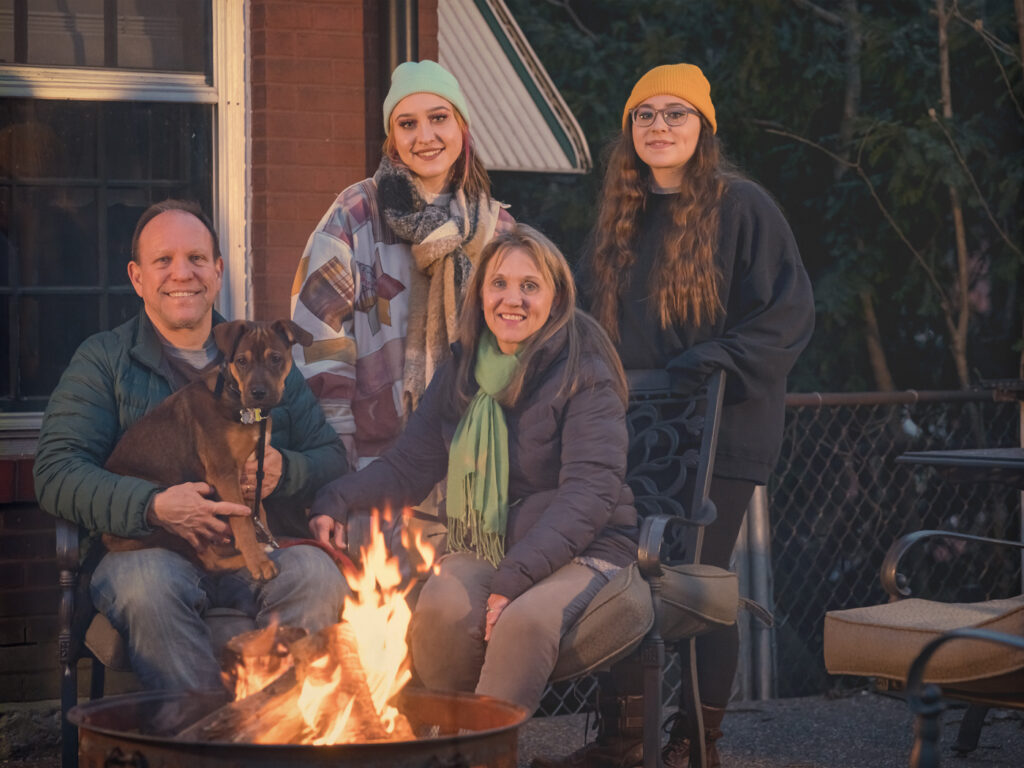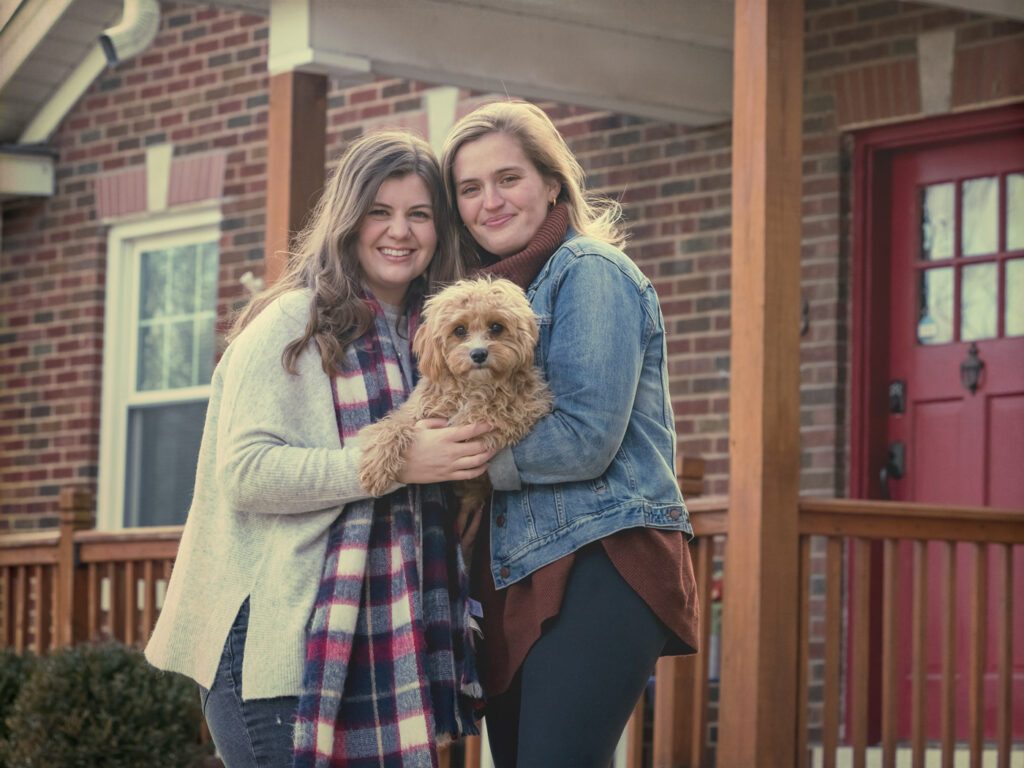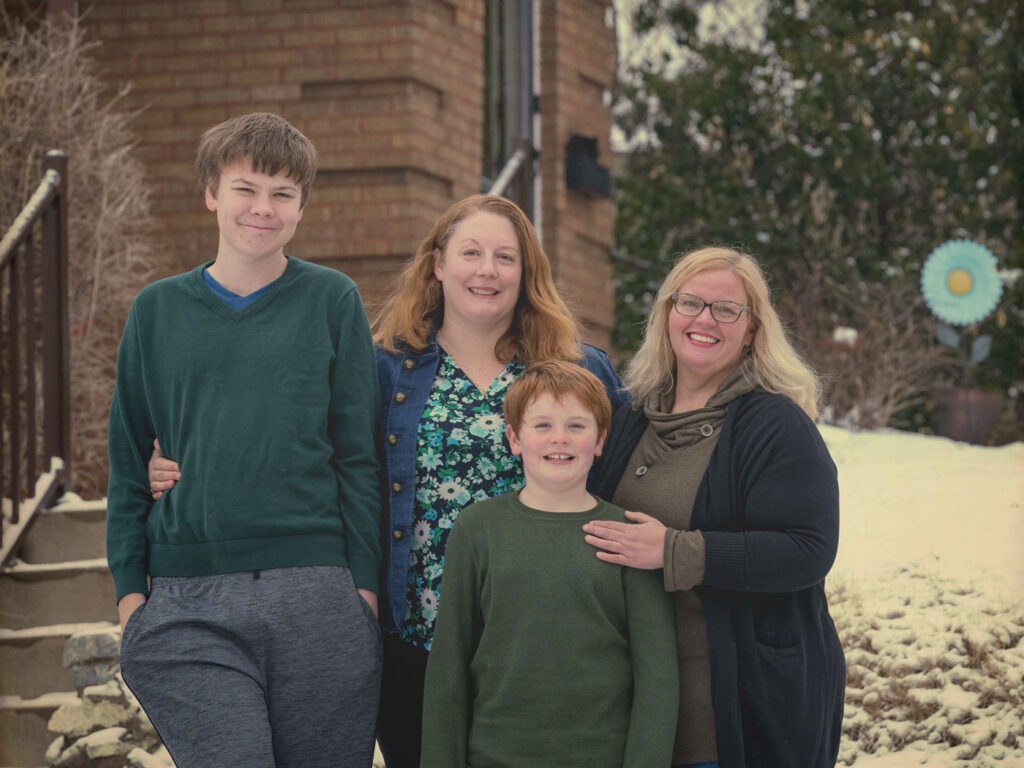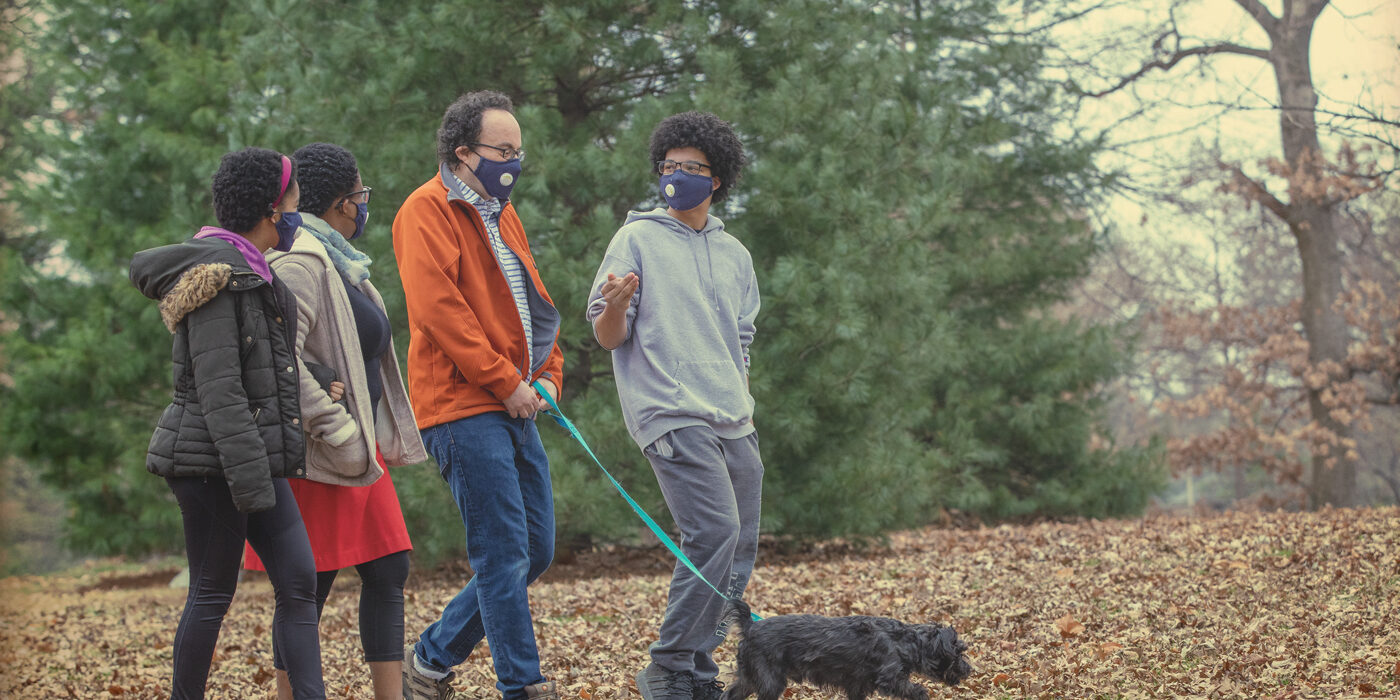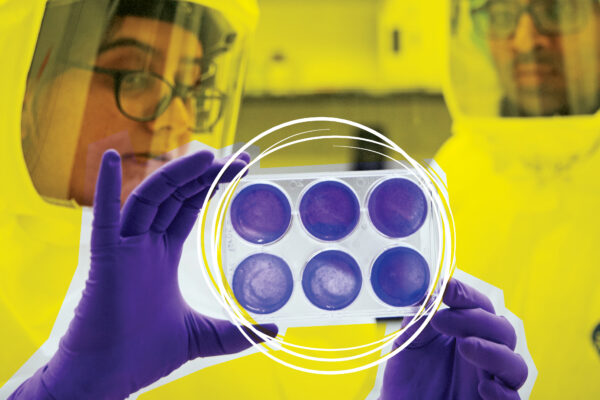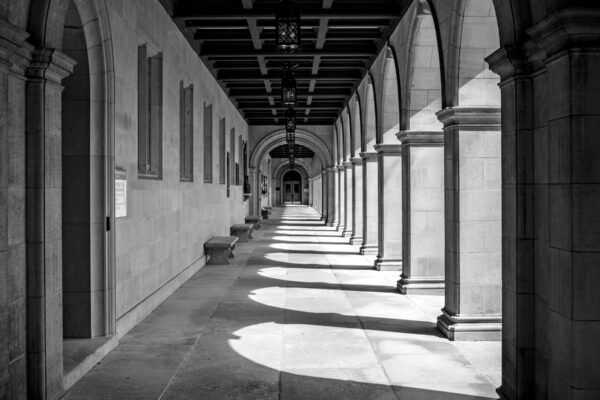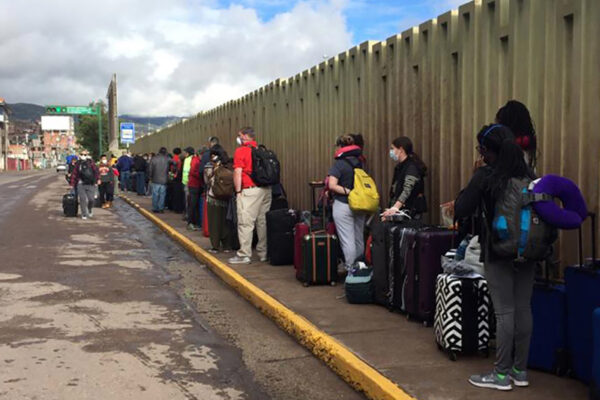In 2020, so much about what we know to be normal came to a grinding halt for the Washington University in St. Louis community. One week in March, we’re looking ahead to a spring “break,” and then suddenly it’s a hiatus turned into a couple of months that’s turned into a way of life. A sea change, that no one really saw coming. Yet the work of the university went on — and goes on as the pandemic spills into 2021. How? Because of all of us.
The tiny little virus that is COVID-19 has done a lot to humanity pathologically, but it’s also laid bare who we are psychologically. It’s revealed who we are and what’s important. It’s revealed the strength and importance of connection, and while those connections are now masked up and physically distant, or at the mercy of wires and computer code, we as a university have proven that we are strong and resilient and irrepressible. We are persevering. We are showing up. We are doing both the work before us and the work of our lives simultaneously, keeping it together from the Danforth and Medical campuses to satellite “offices” all over the metropolitan St. Louis region.
Here’s how, through the eyes of one remarkable family and snapshots of a few others. We’re managing these COVID times. And we might even be better when it’s all over.
A family of physicists
On the east end of Clayton lives a WashU family of four in a two-story house on a tree-lined street, just over a mile from the western edge of the Danforth Campus.
But this is the time of COVID-19, where distance feels immeasurable and time seemingly repeats itself. That can be trying for a family of physicists, whose life’s work is the never-ending quest for how, and why.
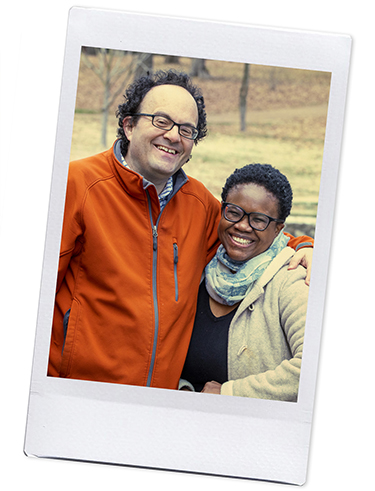
Which is why for the better part of the past 11 months, the Nussinov Family, including Zohar Nussinov, professor of physics in Arts & Sciences and an expert in condensed matter physics; his wife Tsitsi Madziwa Nussinov, a lecturer in the Department of Electrical & Systems Engineering in the McKelvey School of Engineering; their son Ethan, 17, a senior at Clayton High School; and daughter Maya, 13, an 8th grader at Wydown Middle School, have led four lives under one roof. Yet they carry on as best they can, living, laughing and loving together in the most trying of circumstances in a time with no clear end in sight.
How are they doing it?
“We figured early on, let’s do one thing and stick with it,” says Tsitsi, a native of Zimbabwe who came to WashU with the kids in 2007, after finishing up work at the Los Alamos National Laboratory. That “one thing” was a self-imposed bubble, a strict quarantine in the family home since the middle of March. Just the four of them, along with Pi, the diminutive 13-pound family pet, a mixture of miniature schnauzer and Scottish terrier.
This time one year ago, the Nussinovs were, like the rest of us, aware of a virus in China but going about their business as usual, planning family trips and spring break college visits with Ethan. But they knew something was brewing. “We may have been pushed faster into awareness because we are friends with a lot of people in the Chinese community, including one of our very close friends,” Tsitsi says. “They started telling us what was happening, and to take it seriously.”
So in early March they canceled the college visits, and then the dominoes started to fall, for them and for everyone. Announcements from the university came fast and furious, and suddenly, “We went into our quarantine core,” Tsitsi says. “And we have decided to stay that way.”
Throughout 2020 and continuing this year, the family keeps a tight ship except for occasional visits to campus to get supplies for a lab or a teaching assignment, family walks in nearby Oak Knoll Park or Forest Park, and wherever Pi needs to venture out in the neighborhood. Groceries are delivered. Even doctor visits, when needed, are virtual. “Thankfully we had the kids’ checkups in March, just before it all changed,” she said.
“We figured early on, let’s do one thing and stick with it.”
Tsitsi Madziwa Nussinov
Not that it was easy. Both Tsitsi, who teaches undergraduates, and Zohar, who teaches and advises graduate students, had to make the abrupt switch from in-person instruction, formed by years of classroom teaching, to virtual teaching via Zoom in a few weeks’ time.
“I teach about 150 students in a class that also has a lab component,” Tsitsi says. “It was one thing trying to set up actual lectures on Zoom, but it was much harder to help students continue their labs remotely. We had to come up with kits to send to students so they could continue their lab assignments.
“It worked out OK, but it still had a lot of glitches, because the students depended on us to help them through it,” she says. “We definitely had to work overtime.”
It also meant reassessing the family’s electronic needs, as they quickly discovered there would be times when the four of them had to be online at the same time in order to accompany the kids’ class schedules that also went virtual at the same time. They tripled their broadband, bought a new modem, added routers. It was a struggle — and an added expense. “But we got it done,” says Ethan, who jumped in to offer technical assistance.
A big lift
It’s a Thursday in November, just one week before Thanksgiving, and Tsitsi’s first task of the day, which for her starts around 8 a.m., is to clean, chop and cook tomatoes from the last harvest of 2020, a collection of red and green varieties from their backyard and a community garden in the City of St. Louis.
It’s a simple task, one she has performed numerous times over the course of the summer. “I make the sauce,” she says. “I put on a pot of rice, take the dog out and then check that the kids were already in their ‘classrooms.’” Maya is in the basement library and Ethan in the den. “Usually I just open the door and they wave to me to get out,” she says, laughing.

Most of her morning is spent in preparation for the class she will teach early in the afternoon. “I have seven graduate student assistants for this class, and over 160 students, 130 of whom are taking labs with me,” she says. “So I am preparing labs and grading rubrics for the graders who will grade on the weekend, and also getting the lecture ready for class.”
At exactly 1:30 p.m., the class, “Introduction to Electrical Circuits,” a 200-level course in the McKelvey School of Engineering, begins with the usual stuff: announcements, chatter about an upcoming quiz, the semester schedule. Then she gets to it, “Lecture No. 20,” or how to transform a circuit with a sinusoidal source into the frequency domain using phasor concepts.
Think that’s a challenge in a Danforth Campus lecture hall on any given day? Try teaching it to 150 undergraduates in 150 different places, into a void of cyberspace just beyond the gigabytes.
At one point she asks a question as any instructor would, ensuring the class is paying attention. No response. A few seconds that seem like minutes, then more dead air. “Can you hear me guys? Anyone?” Finally, one student speaks up. She thanks him. “I just want to make sure I’m not having any technical problems on my end,” she says.
She is authoritative and enthusiastic, unflappable and caring at the same time, a pro who had to reinvent decades of teaching methods overnight. She has mastered Canvas, the university’s online educational portal, so she effortlessly draws equations on her white board as she lectures, explaining the concepts in clear and concise language. While it was an adjustment to move from the classroom to the confines of her home office, she realizes her students are the ones facing the bigger challenge, so she generously serves a role as both teacher and mother.
“They are not getting as much interaction with me, or each other, as they are used to getting,” she says. “A lot of them are taking a lot of classes and are stressed out about exams, so I came up with this idea of a cheat sheet that they create on their own. It’s forcing them to study in advance, and I’m able to give them feedback on whether they have the right concepts down.”
She also has a blind student, which means all lectures must be prepared with enough advance time to be scribed in Braille, so this particular class was incubated a week earlier. But part of her morning prep time is spent reviewing the lecture and preparing notes. Whatever it takes to reach into the void, she will do.
When the class is over, she eats then checks on the kids again — another wave from the teenagers — and then returns to her home office for more classwork and to check in on labs that are being conducted by her undergraduate teaching assistants. She is always on standby to check in and help the assistants via Zoom if need be, or if the traffic in those Zoom sessions gets heavy.
“I do feel like I’m putting in three, maybe four times as much work as I normally do,” she says. “The students email you nonstop, and a lot of them are studying from their homes, which means they’re working in different time zones, from the U.S. to China, India and South Korea.” That translates into evening hours, and sometimes late-night Zoom meetings. The sun never sets on “Intro to Electrical Circuits.”
“I have students who don’t do well in a group setting, or who want to talk to me personally about how they’re doing, so I have to find time for them,” she says. “It’s rewarding to be able to help in that way, but I have to be careful of who’s competing for my time. There are the kids and the house and Zohar.
“It’s a big lift. Everybody is shouldering it.”
Tsitsi Madziwa Nussinov
The afternoon spills into evening. “We didn’t cook, it was leftover night,” she says. “Ethan made rice and enhanced the tomato sauce, and everyone just ate whenever. I had office hours from 7:30-8:45 p.m. And then I think I was kind of done.
“Oh no, I wasn’t,” she laughs, recalling one more thing. “Then I practiced on my Duolingo app. I’m learning three languages.”
Condensed matter
Zohar Nussinov, a native of Israel, has been a faculty member at WashU since 2005. His expertise is in condensed matter and statistical physics, which means his life’s work centers on investigating how collective phenomena (such as metallic, semiconducting, insulating behaviors and flow) in solids, liquids, glasses and other systems, such as networks, emerge from the extremely large number of constituents (electrons, ions or nodes in a network) from which they are built. While he’s not studying COVID-19 directly, he’s a scientist with every fiber of his being, and he understands the gravity of a global pandemic.

Emphasis on “global.” He taught graduate students last fall, which meant smaller classes and more opportunities to collaborate one-on-one or in smaller groups. “I don’t have nearly as many students as Tsitsi does,” he says. But he has collaborations with students and colleagues all over the world, in Indonesia and China and Germany, so he must navigate global time differences. That means there are days when the Nussinov household doesn’t sleep, where the Zoom meetings are going around the clock and the emails are spilling out at all hours, keeping the fiber optic cables hopping with bits and bytes of information.
It’s crucial to the university’s mission, and it’s all in a day’s work for a physicist and a faculty member. “This was the week I had lots of duties guiding and advising students for the following semester’s courses. Usually they wait until the last moment,” he laughs. “Lots of emails and Zoom meetings that week.”
And there’s his work in the department. Nussinov is co-host of the vaunted “Saturday Science Lecture Series,” which went online exclusively in the fall semester. By mid-November, he was preparing to welcome Lan Yang, the Edwin H. & Florence G. Skinner Professor in the McKelvey School of Engineering, who would deliver a public lecture, “Explore the Magic of Light,” via Zoom to about 50. Earlier in the season, he delivered his own Saturday Science lecture, “Quantum math- the superposition principle, Bell’s inequality, and uncertainties.”
“Some of my best ideas come when I’m doing dishes, or just walking around.”
Zohar Nussinov
And he has his work, his papers and his research, his mind constantly churning and thinking and doing calculations in his head, while doing dishes or running or in downtime, when he gets it.
“Some of my best ideas come when I’m doing dishes or just walking around,” he says. “It’s quite universal. When your mind wanders more, you think more abstractly.”
Zohar is introspective and soft-spoken, yet says he misses the campus and in-person collaboration with his colleagues. His collaborations haven’t stop, however, and they extend around the world. Last summer, for example, he and three other physicists in the U.S. and Canada organized a global seminar series called “Correlated Electrons and Frustrated Magnets.” Each Tuesday morning, about 200 participants from all over the world would participate in a 90-minute Zoom call. The sun doesn’t set on condensed matter physics.
The family business
Franz Schubert’s “Quintet in C Major” was written two months before his death and is considered one of his most masterful compositions. Its use of a second cello (as opposed to a second viola), allows for a richer, darker sound. It’s that second cello that Ethan, who took up the instrument at age 5, has been practicing for most of the pandemic with his chamber group, Evans Street Music with Shirley and George Huestis.
There also is classwork and college applications to occupy his time, along with the usual teen-aged affinities of sleep, video games and Netflix. But there’s this piece of music that’s among the world’s most classic compositions, not to mention a challenge for any musician much less a 17-year-old.

“We started it about a year ago, in person, knowing it would take a while,” he says. “Then the pandemic happened, so instead of being able to practice with each other, we’ve been submitting recordings, listening to them and then playing along for one another. It’s gotten more difficult, but I think we’ll have a piece eventually.”
The way they decided to finish it: “Our first violin is recording the entire piece, our second violinist records while listening to that part; our first cellist is good at technology so he has slapped those recordings together, then for me it’s like playing a duet,” he says.
“And so we’re all continuing to play along, and eventually we will have recorded the entire piece,” he says.
Back and forth, trial and error, one day at a time. Just like a family in the pandemic. That’s just his spare time.
This November day, which at that point in the semester didn’t get started until noon because of adjustments by the school, included AP world history, then a break, an orchestra class and another break to eat something. The evening involved attending a meeting of Clayton High’s Black Student Union, then doing more homework, practicing the cello and adding finishing touches to his college applications — a stressor on a high school senior in any year, much less during a pandemic.
He likes to cook for the family, too, and says he has mastered techniques watching Gordon Ramsay videos. Like any teenager, he misses his friends, misses the camaraderie in the hallways and lunchroom, and connects with them via video games.
“When you’re playing it, you can’t help but feel good.”
Ethan Nussinov, on Bach’s “Cello Suite No. 1 in G Major”
It’s not an easy senior year, but when he wants to unwind, he goes to the cello. “Even if I’m just messing around, I really enjoy it,” he says. “Bach’s ‘Cello Suite No. 1 in G Major’ is the first piece I learned a long time ago. When you’re playing it, you can’t help but feel good.”
He says he considered six universities, first among them the one down the street where his parents work. In January, he was notified of his acceptance into the Washington University in St. Louis Class of 2025. His intended major: “Physics,” he says, smiling.
“The family business,” Tsitsi adds, beaming.
Sketchbooks
An 8th grader at Wydown Middle School, Maya is up before 8 a.m., typically the first one of the four of them. Before classes start at 8:30 a.m., she eats breakfast and makes coffee — even though she doesn’t like it.
“Yet,” Ethan interjects. “She doesn’t like it yet.” Maya manages a half-smile smirk, the kind of little-sister face that says, “I hear you but I’m not paying attention.”
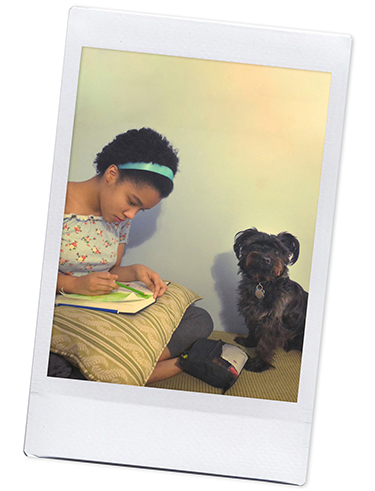
On this November day, her first class was P.E., which she listens to from her room because she knows she typically has the whole day to complete the assignment: a set of exercises, or, at times, a mindfulness meditation. She then makes her way to the family library in the basement, which is her designated workspace, for morning classes of math and social studies, sneaking in some homework before heading back upstairs to make lunch for everyone. On this day, it is rice to go with the tomatoes her mom had prepared earlier.
After lunch, “Depending on what time it is, I’ll barge into their offices and say hi to the parents,” she says. Then it’s time for the very important family assignment of taking care of Pi, feeding or walking or letting him out in the backyard, anything so he won’t bark at the unfamiliar voices that may be coming out of Tsitsi’s or Zohar’s or Ethan’s computer. Then she’ll sit in on her afternoon classes.
Her quarantine diversion? Drawing. “I’ve filled up lots of sketchbooks,” she says proudly. It’s a hobby that’s burgeoning into a passion, with Tsitsi’s gentle encouragement and prodding, including shared mother-daughter classes.
Light at the end of the tunnel
Early on, the Nussinovs made a decision that has proved crucial to their well-being. They began a quarantine bubble with the family of Hayen and Alexander Seidel, associate professor of physics and a longtime friend and collaborator, who arrived at WashU two years after Zohar. Their kids are around the same ages and are friends, and they are each other’s outlet when things get difficult.
They spend time at each others’ homes for mini-vacations, catch up movies, work, take walks together and are fundamentally each other’s emotional support. “Zohar’s sister died last summer,” Tsitsi says. “I don’t know how we could have survived that without them.” And they’re navigating life together. “When our teenagers get mad at us, they go there, and their teenagers come here when they need to get away,” Tsitsi laughs.
The families also shared recent holidays such as Hannukah, Thanksgiving, Christmas and the Super Bowl. “On Thanksgiving, before we ate, we each went around and said what we were thankful for,” Tsitsi says. “That was quite meaningful.”
“We were on the same page from the very beginning,” Alexander Seidel says. “When we realized this was going to last for more than a month, we decided to form a pod where we don’t see other people but we hang out together.
“It’s a relationship based on trust. Without this, it would have been a sadder time for all of us.”
Alexander Seidel
And as one year ended and a new year began, Tsitsi put it in perspective in a Facebook entry filled with hope and optimism, fueled by the news of vaccines — and with quite a story of her own:
“I tell my kids to hang in there and it will all pass, that I was in this situation before,” she writes. “A different kind of pandemic — being caught up at the tail end of a brutal war of Zimbabwe’s independence.”
She goes on to describe two years of her young life in a country at war, using words and phrases like “terrorists,” “land mines,” “harassment” and “people died.” “I lost almost two years of school,” she wrote, describing how her family scattered to different parts of the world.
But Tsitsi — and the Nussinov Family — remain ever hopeful.
“We are in the thick of this pandemic, people are dying and the politicians are doing what they did back then — care more for their own power than the kids missing school and the people dying.
“But at least now there is light at the end of the tunnel.”
Family photos courtesy of the Nussinov family. Design by Katlyn Wentzel.
More snapshots: WashU families figuring it out, sticking together
